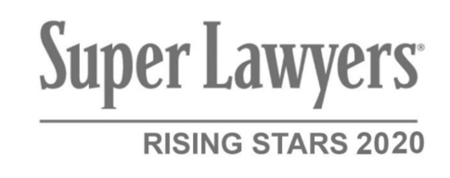Who Pays for Damages in a 3-Car Crash in Massachusetts?
Published in Car Accidents on December 31, 2020
Reading Time: 5 minutes
Getting into a car accident with one other driver is stressful enough. When you add multiple drivers and vehicles into the mix, it can become even more overwhelming. And, it’s easy to understand why – it becomes even more challenging to determine who was at fault and exactly which role each driver will play in the legal process after an accident.
A chain-reaction crash describes a situation in which three or more vehicles are involved in an accident. These situations are considered chain-reactions because a multiple-car collision is often started by two vehicles, with more vehicles piling on due to road obstruction and slow reaction time.
Due to the tendency of chain-reaction collisions to accumulate more and more cars, they are often referred to as a pileup.
Are Chain-Reaction Collisions More Dangerous?
Two-car crashes can be extremely serious on their own. However, the more vehicles and drivers involved in a collision, the greater the likelihood of injury and vehicular damage. Each time another car piles onto a chain-reaction collision, the previously involved cars are hit with additional impact. This could worsen already incurred injuries as well as inflict even greater damage to the vehicles involved.
Collisions involving multiple vehicles can also be extremely chaotic, leading to increased damage. Between cars and debris littering the road, people stopping to help, rubberneckers failing to watch the road vigilantly, and even potential weather hazards, chain-reaction crashes can be dangerous for many more reasons than just the simple fact of the collision itself.
If a multiple-car collision occurs on a highway, the presence of large commercial vehicles like tractor-trailers and 18-wheeler trucks can increase the danger for those involved in the accident and bystanders. Heavier vehicles such as these are unable to stop as quickly as smaller vehicles, increasing the likelihood that they’ll join a pileup if one occurs in their path.
Not to mention, the sheer weight of these vehicles can create very significant destruction during a chain-reaction crash.
If You’re In a 3-Car Collision, Who Pays for Damages?
Laying blame in a massive pileup can be extremely difficult. This is particularly true if the situation is chaotic enough to the point where no one involved seems to have a clear idea of who made the first reckless decision that created the destructive chain of events. However, collisions involving only three cars are typically easier to untangle, especially if every party is on the same page concerning the chain of events that occurred.
In order to establish fault in your chain-reaction crash, you’ll need to have a clear understanding of exactly what happened and how it happened. Where to lay blame will depend largely on who made the first error that led to the chain-reaction crash.
Not sure exactly who’s at fault in your 3-car crash?
Here are some common circumstances that may be able to shed some light on your situation:
- If Vehicles A and B are stopped at a stoplight and Vehicle C rear-ends Vehicle B, causing Vehicle B to then rear-end Vehicle A, the driver of Vehicle C would be at fault for failing to stop.
- If Vehicle A makes a poor decision such as changing lanes at an unreasonable moment and Vehicle B rear-ends Vehicle A, causing it to swerve into another lane directly into the path of oncoming Vehicle C, the driver of Vehicle A would be at fault for changing lanes recklessly.
- If Vehicle A stops suddenly, Vehicle B is tailgating and ends up rear-ending Vehicle A, and Vehicle C is also driving too close behind and rear-ends Vehicle B, the drivers of Vehicle B and Vehicle C would be at fault for the initial rear-end collision and the secondary rear-end collision, respectively.
Not every 3-car collision will abide by one of these general rules. However, the driver who made the illegal or reckless choice (i.e., failing to stop at a stoplight, texting and driving, changing lanes unsafely, and tailgating) will often be the one found liable. This is commonly referred to as a breach of the driver’s duty of care, as they failed to operate their vehicle in a careful manner and therefore caused a collision.
Shared Fault in 3-Car Crashes
In Massachusetts, anyone who contributes to an accident will share liability for the consequences. The state follows a modified comparative fault system with a 51% bar to recovery. What this means is that victims can recover compensation for their injuries if they share some of the blame for the crash, as long as their degree of blame doesn’t exceed 50 percent. And, if you’re allocated 50% of the blame or less, your damages will be reduced to reflect that.
So, let’s say that Vehicles A, B, and C are involved in a crash at an intersection. The driver of vehicle A was texting and didn’t notice that the light had changed from red to green. The driver of vehicle C was attempting to “time” the light. However, since Vehicle A didn’t move right away, neither did Vehicle B. So, Vehicle C slammed into the back of Vehicle B. The momentum pushed Vehicle B into the back of Vehicle A.
The driver of Vehicle A and the driver of Vehicle C are both allocated fault for the accident. Driver A is assigned 55 percent of the blame, while Driver C is apportioned 45 percent of the blame. This means that:
- Driver A is responsible for 55% of the damages sustained by Drivers B and C, and unable to seek compensation from the other parties
- Driver B is entitled to seek full compensation for their injuries and losses
- Driver C is entitled to compensation, but their damages must be reduced by 45% to reflect their proportionate responsibility for the crash.
As you can see, Driver A just misses out on the ability to seek damages because their share of the blame exceeds 50%. If the driver had hired an accident attorney, they might have been able to reduce the degree of fault assigned to them, thereby preserving the ability to recover some of the money they’d need to account for their crash-related losses.
For more information, call our law office at (617)-391-9001. Or if you would prefer to email us, then please visit our contact page.
What Causes Chain-Reaction Collisions?
Many of the catalysts for collisions involving multiple vehicles also lead to two-car crashes or even a single-car crash. However, there are some driving mistakes that tend to be more likely to cause a pileup than others.
Speeding. Speeding is one of the most common mistakes drivers make that leads to collisions. In fact, around one-third of all fatalities due to motor vehicles in the last two decades have been caused by speeding. If a driver is going over the speed limit, it will be more difficult to stop in time if they come upon a collision, leading to the very real potential for a chain-reaction crash.
Tailgating. Tailgating is a bad habit of impatient drivers that very often leads to accidents. Similar to speeding, a driver who is tailgating is much less likely to be able to stop in time if the car in front of them gets into a collision.
Distracted driving. According to the National Safety Council, using a cell phone while driving leads to 1.6 million collisions every year. It’s a well-known fact that texting and driving is illegal and extremely unsafe, yet millions of Americans are unable to resist the urge. If you’re distracted while driving, your response time will be slower, increasing your likelihood of creating a pileup if two or more vehicles in front of you collide.
Changing lanes recklessly. Making sure the lane you’re merging into is completely clear is extremely important, especially when driving on the highway. Improper lane changes are one of the primary catalysts of chain-reaction collisions, and extreme damage can occur within seconds.
Determining Fault is Complex – Consult an Experienced Attorney For Help
It can sometimes be difficult to determine who’s at fault in a chain-reaction collision; however, in the case of a 3-car collision, liability can typically be placed on one or more drivers relatively easily if all of the parties involved are able to determine who made the reckless choice and who was simply a victim of circumstance.
Comments are closed.










